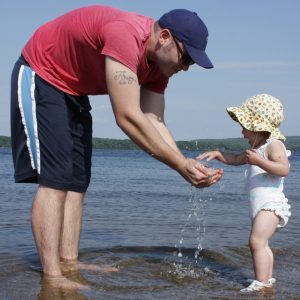Researchers Investigate Impact of Aging Infrastructure, Human Activities on Coastal Waters
 Most people know water runs downhill from mountain to sea. But they may not be aware of what gets picked up along the way, things like human waste, animal feces and storm water full of nutrients and pesticides from farm fields.
Most people know water runs downhill from mountain to sea. But they may not be aware of what gets picked up along the way, things like human waste, animal feces and storm water full of nutrients and pesticides from farm fields.
In the past this was thought to be a good thing. The water washed away the bad stuff and that was that. But there is no “away” in our expanding human landscape. And New England’s tidal waters bear the symptoms of this reality as pollution derived from storm, septic and malfunctioning sanitary sewer systems flow downhill from coastal communities to the sea, contaminating water bodies. And when this happens beach waters may become unsafe for people.
A three-year, multi-institutional collaboration seeks to understand the mechanisms that foster this bacterial flow pattern while also examining risks to public health and the potential for real-life solutions. The New England Sustainability Consortium (NEST) has mobilized the collective capacity of New England universities and colleges to strengthen connections between science and decision-making. Beginning with coastal areas in Maine and New Hampshire, NEST is capitalizing on research and stakeholder synergies to advance the theory and practice of sustainability science. This scientific model seeks solutions to pressing societal problems with a focus on both human wellbeing and protection of the planet’s life support systems. A key component is collaboration with diverse stakeholders; in this case state and local government, beach managers, shellfish harvesters and citizen scientists. See more in this story here
